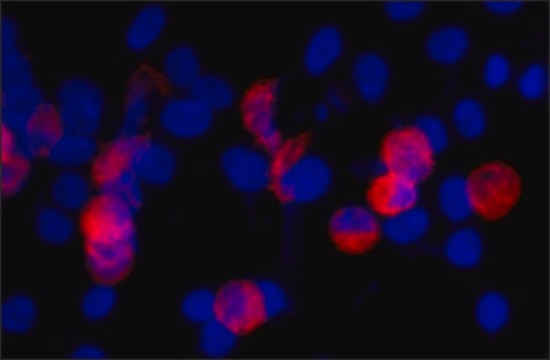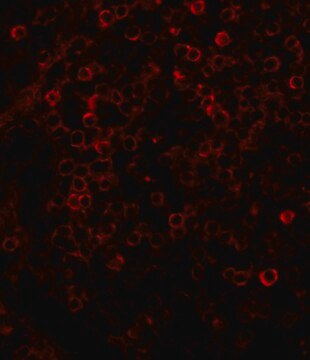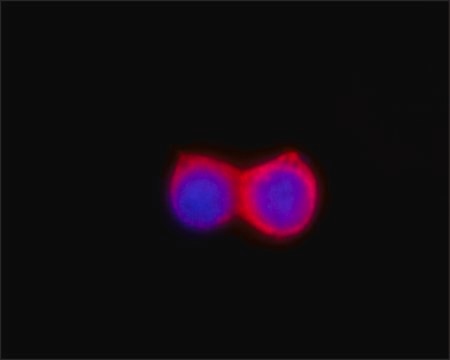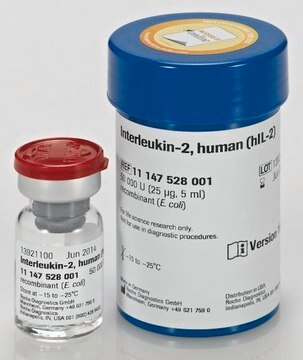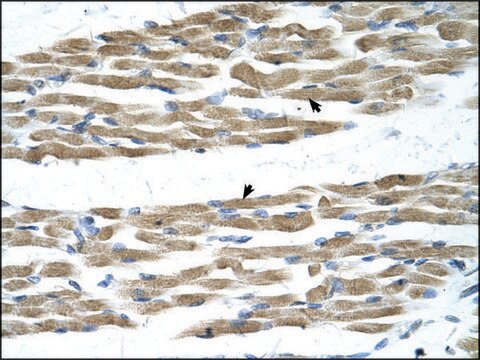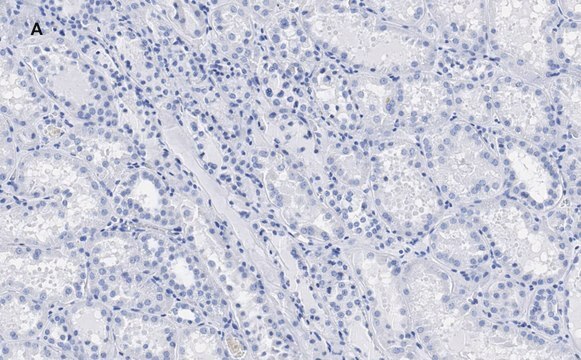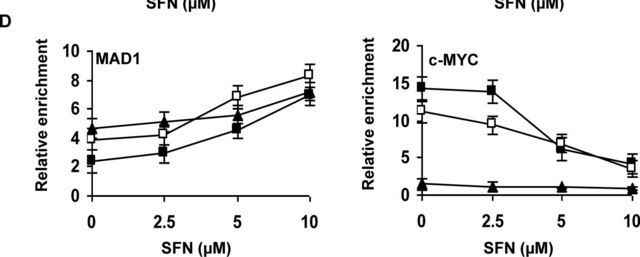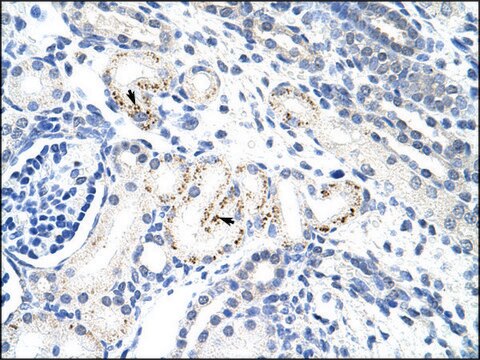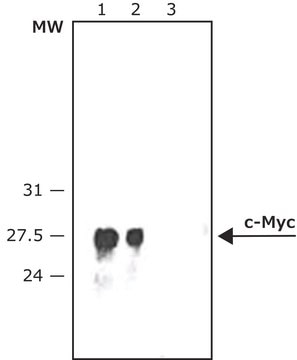C3956
Anti-c-Myc antibody produced in rabbit
~0.5 mg/mL, affinity isolated antibody, buffered aqueous solution
Synonym(s):
Myc Tag Polyclonal Antibody, c-Myc Antibody
About This Item
Recommended Products
biological source
rabbit
Quality Level
conjugate
unconjugated
antibody form
affinity isolated antibody
antibody product type
primary antibodies
clone
polyclonal
form
buffered aqueous solution
species reactivity
human
concentration
~0.5 mg/mL
technique(s)
immunocytochemistry: 5-10 μg/mL
immunoprecipitation (IP): 1-2 μg using immunoprecipitates a c-Myc fusion protein from transfected mammalian cell lysates or bacterial extracts
indirect immunofluorescence: 5-10 μg/mL using detects c-Myc fusion proteins in methanol-acetone fixed transiently transfected cells
microarray: suitable
western blot: 0.5-1 μg/mL using detects c-Myc fusion proteins in cell extracts from transfected cultures as well as bacterial lysates.
UniProt accession no.
storage temp.
−20°C
Gene Information
human ... MYC(4609)
Looking for similar products? Visit Product Comparison Guide
General description
Specificity
Immunogen
Application
.
Biochem/physiol Actions
Physical form
Still not finding the right product?
Give our Product Selector Tool a try.
recommended
Storage Class
10 - Combustible liquids
wgk_germany
WGK 1
flash_point_f
Not applicable
flash_point_c
Not applicable
ppe
Eyeshields, Gloves, multi-purpose combination respirator cartridge (US)
Certificates of Analysis (COA)
Search for Certificates of Analysis (COA) by entering the products Lot/Batch Number. Lot and Batch Numbers can be found on a product’s label following the words ‘Lot’ or ‘Batch’.
Already Own This Product?
Find documentation for the products that you have recently purchased in the Document Library.
Customers Also Viewed
Our team of scientists has experience in all areas of research including Life Science, Material Science, Chemical Synthesis, Chromatography, Analytical and many others.
Contact Technical Service
